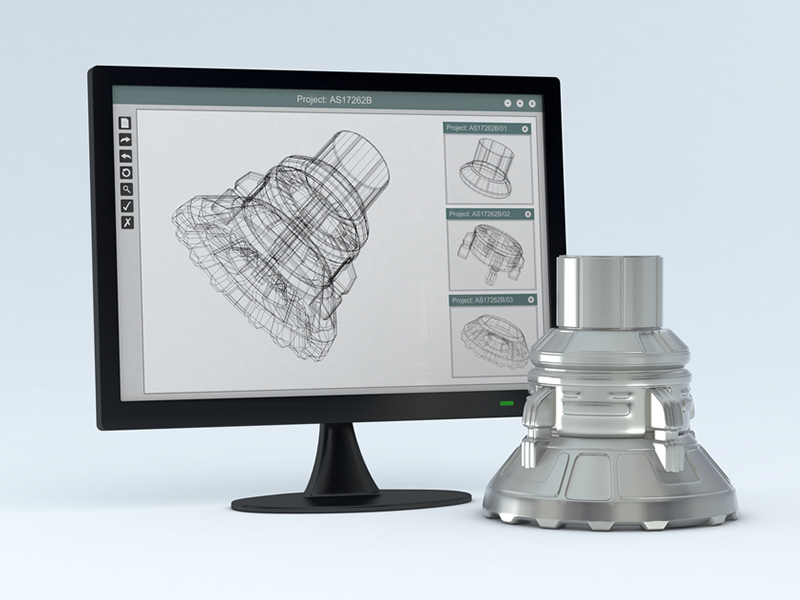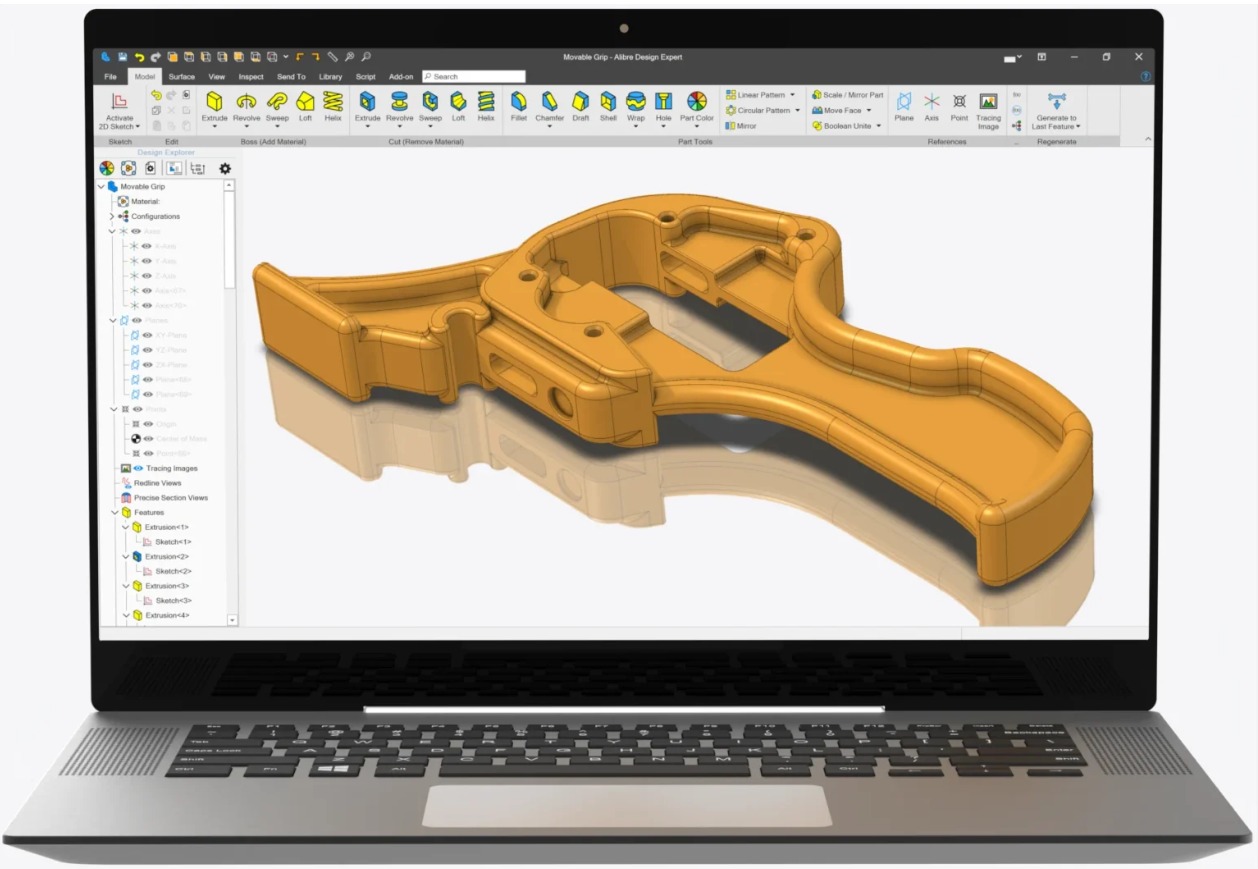Introducing the best 3D Rendering Software for product design in 2024

In dynamic design, 3D rendering software transforms digital models into visually stunning, lifelike images. Whether you're an architect, product designer, or engineer, understanding the essence of 3D rendering software is crucial for bringing your creations to life. This guide will also delve into the best 3D rendering software for product design, empowering you to make informed decisions and achieve optimal results in your creative pursuits.
What Is 3D Rendering Software for a product design?
3D product rendering (or visualization) involves creating realistic or stylized images using 3D models and specialized software, resulting in a "3D render." The key benefit of this technology is that it allows you to see a product's appearance before it's physically made. You can explore various color options, perspectives, and environments, viewing the product as a whole or zooming in for detailed shots. This enhanced visualization provides marketers with early visual assets for promotions and enables manufacturers to assess product designs accurately.
How are 3D Renders made?
3D renders are created through a process that combines technology and artistry. The main steps are:
Modeling: Using software, a 3D representation of the object is created as a mathematical model.
Texturing: Textures are added to the 3D model's surfaces to make them look more realistic.
Lighting: Lights are strategically placed and adjusted to create a realistic lighting environment for the 3D scene.
Camera Setup: Setting up camera viewpoints is essential for controlling how the 3D environment is captured and shown.
Computer-Generated (CG) Rendering: Using computer software, 3D models and scenes are converted into 2D images, creating the final rendered image.
Post-Production: After initial rendering, this stage involves editing and refining the output with visual effects using image editing tools like Adobe Photoshop.
Who Uses 3D Product Rendering?
Computer-Generated Imagery (CGI) has become increasingly important in different fields. It has a significant impact on industries that use product rendering, particularly:
Product Manufacturers: CGI assists in product design, development, and marketing materials creation. It offers flexibility throughout product life cycles.
E-commerce Platforms: CGI is widely used by these platforms. Vendors provide 3D models for creating realistic product renders. Augmented Reality (AR) is used to showcase products in immersive experiences.
Retail Companies: CGI is advantageous for retailers because of its reusable assets. Faster production of large-scale imagery without transportation limitations, Integration with AR and VR technologies
Entrepreneurs: Entrepreneurs use CGI (3D modeling and rendering) to accelerate product launches. They can create high-quality visuals showcasing products in various settings, even before production or distribution. This allows them to launch websites and marketing campaigns while securing funding through crowdfunding.
Marketing firms greatly benefit from 3D rendering for two main reasons:
Time Savings: Agencies can obtain product visuals before manufacturing, significantly reducing lead times.
Creative Flexibility: 3D rendering offers boundless creative options. Artists can display products from any angle and in any setting, allowing for exceptional customization and visual impact.

What is the best software for 3D product design?
Alibre has many key features and elaborate on how they contribute to an efficient and powerful 3D rendering software . Let's break down !
1. Powerful 3D CAD Software:
Alibre Design is a robust 3D CAD software for mechanical design, prototyping, and manufacturing. Its capabilities go beyond just rendering, encompassing the entire design and engineering process.
2. Ease of Learning and Use:
Alibre Design prioritizes user-friendly features, ensuring that designers can quickly grasp the software regardless of their experience level. The easy-to-learn interface facilitates a smooth user onboarding process, reducing the learning curve.
3. Straightforward Workflows and Modern Interface:
The software is built on a modern interface, emphasizing straightforward workflows. This modern design enhances the user experience and ensures that the design process is intuitive and efficient.
4. Parametric and Rules-Based Modeling:
Alibre Design excels in parametric and rules-based modeling, allowing users to create complex mechanical systems easily. This feature enables the efficient management of design complexities, providing flexibility and control in the modeling process.
5. Dedicated Tools for Various Design Aspects:
Alibre Design offers dedicated tools for modeling, sheet metal design, assembly, drawing, rendering, and data/logic-driven design. This comprehensive suite of tools ensures that designers have specialized functionalities for every stage of the design process, including rendering.
6. Industry-Leading Interoperability:
Interoperability is a key strength of Alibre Design, enabling seamless collaboration with other design and manufacturing tools. This ensures designers can work across various platforms and integrate Alibre Design into existing workflows.
7. Native Python-Based Scripting Language:
Alibre Design goes beyond standard functionalities with a native Python-based scripting language. This feature allows for automation, customization, and scripting, giving users the flexibility to tailor the software to their specific needs and automate repetitive tasks.
8. Refined Over 24 Years:
The longevity of Alibre Design, refined over 24 years, speaks to its reliability and continuous improvement. This extensive refinement process ensures that the software evolves with industry needs, incorporating user feedback and technological advancements.
9. Drive Innovation Across Design, Manufacturing, and Marketing:
Alibre Design is a tool to drive innovation across design, manufacturing, and marketing processes. By offering a comprehensive set of features, interoperability, and automation capabilities, the software becomes a catalyst for creativity and efficiency.
Rendering Software for Sketchup
As technology advances, 3D renderings become increasingly lifelike. In the future, the distinction between real-world images and computer-generated graphics may become indistinguishable. Despite being widely used in architecture and design, Sketchup has limited rendering capabilities. However, its user-friendly design creation interface makes it a popular choice among designers.
Why is 3D Rendering Software Important?
Visual Communication: 3D rendering software allows designers to clearly and accurately communicate their concepts. It helps create lifelike representations of architectural plans, product designs, and industrial models, providing a visual experience that surpasses 2D drawings.
Design Evaluation: Rendering software empowers designers to assess their creations from multiple perspectives, in various lighting conditions, and with different material choices. This facilitates the early identification of potential problems, enabling designers to refine their designs before proceeding to manufacturing.
Client Presentations: Using realistic digital models (renders) in presentations helps architects, designers, and marketers better convey their concepts to clients. By seeing the designs in a lifelike manner, clients can more easily understand and appreciate them, resulting in increased satisfaction and collaboration.
Marketing and Promotion: 3D renders play a crucial role in marketing and promotion. They enable businesses to showcase their products or architectural plans in a visually captivating way. This attracts potential customers and investors by vividly demonstrating the features and benefits of the designs.
Conclusion:
Alibre Design transcends the traditional boundaries of 3D rendering software by providing a holistic 3D CAD solution. Recognized as the best 3D rendering software for product design, its focus on ease of use, parametric modeling, dedicated tools, interoperability, scripting, and continuous refinement positions it as a versatile and powerful tool for designers across various industries.
Connect with Alibre, the leading provider of best 3D rendering software for product design. Their advanced software enables you to elevate your design concepts, providing a complete toolkit for innovative and streamlined product development.
Last updated : 1 month, 2 weeks ago